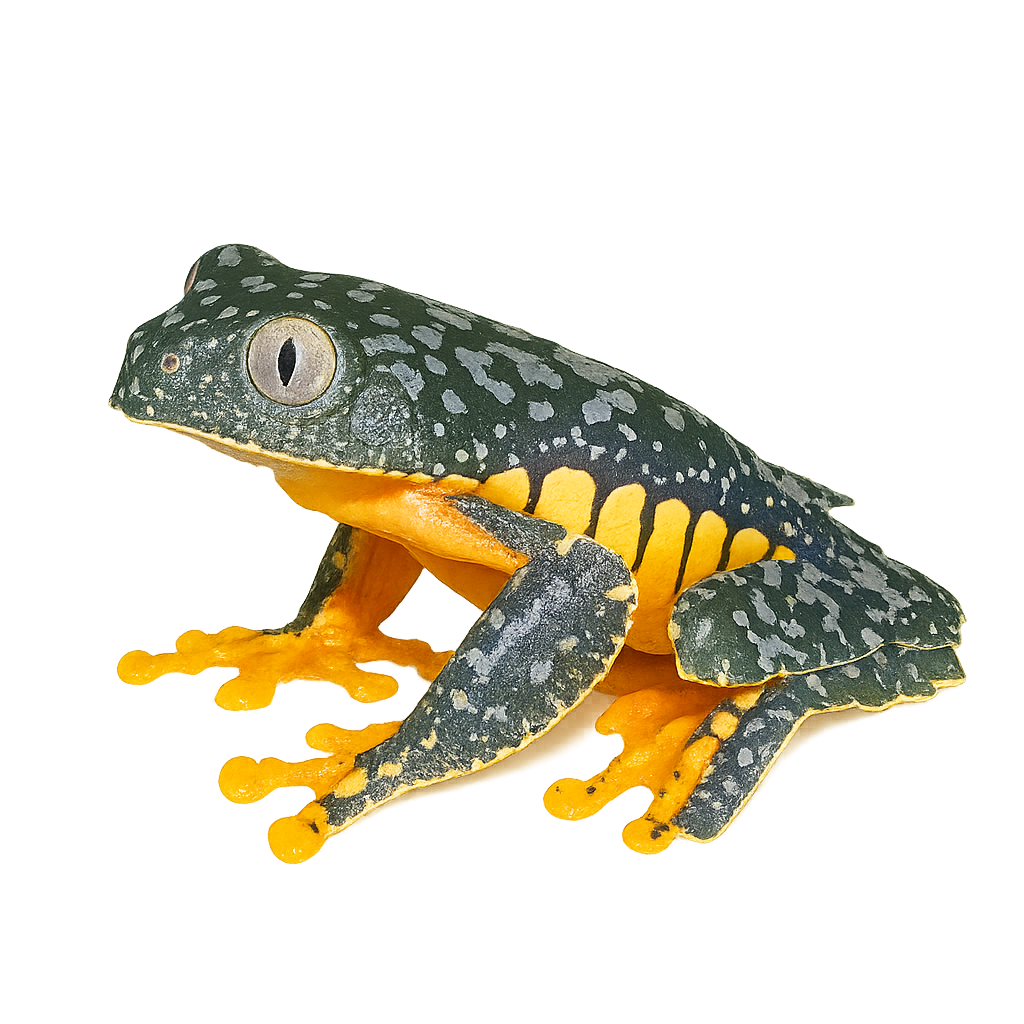Your wildlife photography guide.
Explore the fringed tree frog in detail, study its behavior, prepare your shots.
Where to observe and photograph the fringed tree frog in the wild
Learn where and when to spot the fringed tree frog in the wild, how to identify the species based on distinctive features, and what natural environments it inhabits. The WildlifePhotographer app offers tailored photography tips that reflect the fringed tree frog’s behavior, helping you capture better wildlife images. Explore the full species profile for key information including description, habitat, active periods, and approach techniques.
Fringed Tree Frog
Scientific name: Cruziohyla craspedopus

IUCN Status: Least Concern
Family: HYLIDAE
Group: Amphibians
Sensitivity to human approach: Suspicious
Minimum approach distance: 2 m
Reproduction period: November to March
Incubation: 7–10 jours
Births: December to April
Habitat:
humid tropical forests, canopy, arboreal areas
Activity period :
Mainly active at night, generally discreet during the day.
Identification and description:
The Fringed Tree Frog, or Cruziohyla craspedopus, is a fascinating amphibian species primarily inhabiting the humid tropical forests of South America. It is recognizable by its vibrant coloration, blending shades of green, blue, and yellow, which allows it to effectively camouflage in its natural habitat. This frog also features distinctive fringes along its limbs, from which it derives its name. It is mainly arboreal, spending most of its time in the tree canopy. The Fringed Tree Frog is nocturnal and primarily feeds on insects. It plays a crucial role in the ecosystem by regulating insect populations and serving as prey for many predators. Although its conservation status is concerning, it is still relatively widespread in some areas.
Recommended lens:
Macro – adjust based on distance, desired framing (portrait or habitat), and approach conditions.
Photography tips:
To photograph the Fringed Tree Frog, it's essential to be patient and discreet, as this species is suspicious and primarily nocturnal. Use a macro lens to capture the fascinating details of its colorful skin and distinctive fringes. Focus on twilight or nighttime hours to observe it in its natural habitat. Ensure not to use direct flash, as it could disturb the animal. Opt for soft and indirect lighting to highlight its colors without frightening it.
The WildlifePhotographer App is coming soon!
Be the first to explore the best nature spots, track rutting seasons, log your observations, and observe more wildlife.
Already 1 449 wildlife lovers subscribed worldwide

